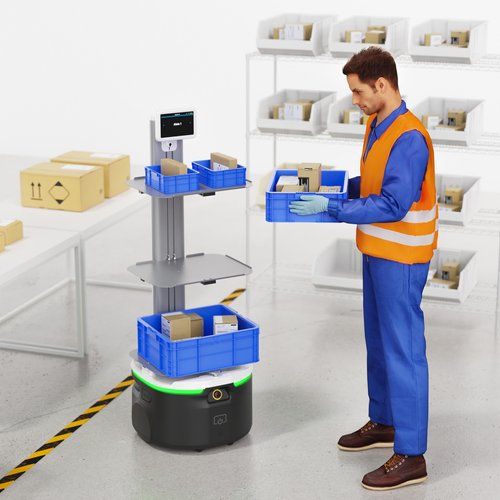The Rise of Cobots in 2025: A Manufacturing Revolution
- Maxime Fortier-Grégoire

- 21 juil. 2025
- 2 min de lecture
In 2025, the manufacturing industry is undergoing a major transformation driven by the growing adoption of collaborative robots (cobots). Designed to work alongside humans, these machines are redefining production processes by delivering flexibility, safety, and efficiency.
Rapid Growth and Market Momentum
According to the International Federation of Robotics (IFR), the global market value for industrial robot installations has reached a record USD 16.5 billion in 2025. This growth is fueled by technological innovation, market demand, and the emergence of new applications across multiple industries.
Key Technological Advances
Modern cobots integrate advanced technologies that enhance their performance and interaction with human operators:
Advanced sensors: Cobots are equipped with sophisticated sensors to detect their surroundings and adjust their movements in real-time, ensuring safe collaboration with human workers (source: Rockwell Automation).
Edge computing: On-site, real-time data processing allows cobots to react immediately to production changes and optimize processes without relying on constant cloud connectivity.
Private 5G networks: Dedicated 5G infrastructure enables fast, reliable data transmission between cobots and control systems, improving coordination and responsiveness on the factory floor.
Benefits for the Manufacturing Industry
The integration of cobots into manufacturing processes delivers significant advantages:
Enhanced precision – Cobots perform tasks with consistent accuracy, reducing errors and improving the quality of finished products.
Improved workplace safety – Built to detect human presence and adjust their movements accordingly, cobots minimize workplace accidents.
Operational efficiency – By handling repetitive or physically demanding tasks, cobots free workers for higher-value activities, boosting overall productivity.

Challenges and Considerations
Despite their many benefits, cobot adoption comes with certain challenges:
Initial investment: Upfront acquisition and integration costs can be high, although long-term savings often offset these expenses.
Workforce training: Employees must be trained to interact effectively with cobots, requiring time and resources.
Maintenance and support: Ensuring optimal performance requires regular maintenance and specialized technical support.
Future Outlook
As technology continues to evolve and costs decrease, cobot adoption is expected to accelerate in the coming years. Companies that invest early in these innovative solutions will be better positioned to meet market demands and remain competitive.
Exobot’s Commitment to Smart Manufacturing
At Exobot, we are committed to supporting businesses in this transition toward smarter, more collaborative production. Our robotic solutions are designed for seamless integration, enhanced safety, and ease of use, helping manufacturers take full advantage of the opportunities offered by cobotics.
